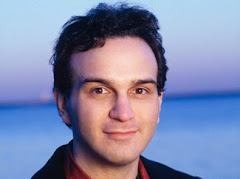Bach and Mahler do not usually fit into a modern classical concert programme together. However, the rising Russian conductor Stanislav Kochanovsky innovatively and ingeniously assembled Mahler's Bach Suite and Fifth Symphony into a most delectable programme with the MPO.
Proceedings for the evening opened with Mahler's Bach Suite (or to give it its long name - the Suite for string orchestra, harpsichord and organ by J.S. Bach). Mahler re-arranged and re-orchestrated the first two movements of his Bach Suite from the Overture as well as the Rondeau and Badinerie from Bach's Orchestral Suite No 2 in B minor BWV 1067.
Since the flute has a prominent part to play in Bach's Second Suite, the guest principal flautist for the evening, Andrew Nicholson, took up a position next to conductor Kochanovsky on the podium. In the opening Overture (Grave), the sustained organ notes often swamped the strings in the balance. However, in the following movement of the Rondeau flanking the Badinerie, very lively playing with sprightly rhythms from the strings and flute lifted the portentous mood of the opening movement.
In the lovely third movement (known as Bach's Air on the G string) from the Orchestral Suite No 3 in D major BWV 1068, Kochanovsky encouraged the MPO strings to paint a very serene mood with wonderfully rich tones. In the last movement of the Gavotte I and II also from the Orchestral Suite No 3 in D major BWV 1068, festive trumpets heralded a triumphant closing of this rarely-played Mahlerian opus.
After a brief interval, we heard Kochanovsky's interpretation of Mahler's Fifth Symphony. More often than not, one can tell how good (or bad) a performance of Mahler's Fifth will be from its opening trumpet call. Here, the MPO's guest principal for the night, Shane Hooton, struck a balance between stridency, edginess and tragedy; but without the accuracy of intonation which Mahler's stratospheric and formidable trumpet part calls for.
Kochanovsky unfolded the first movement with bleak crispness in the tread of a fairly brisk funeral march, in keeping with modern performing traditions. The first movement's darkness was quickly eclipsed by the second movement which emphasized the rugged, almost schizophrenic nature of the score. In keeping with Mahler's explicit instructions, Kochanovsky had the MPO principal hornist, Grzegorz Curyła, play the first horn part for a solo obbligato horn next to himself, accentuating the dialogues between the horn and the strings in the great central bucolic Scherzo third movement.
The MPO strings and harp took centre stage as Kochanovsky unfolded the famous beautiful Adagietto movement (made famous by its use in Visconti's film Death in Venice)) in a romantically gorgeous reading which was full of passion at a reasonable pace.
Kochanovsky's approach to the jolly finale, as Mahler moves from tragedy to triumph, was one of fierce industry, leading to a jubilant and glorious conclusion to a terrific concert, marred only by occasionally poor MPO horn and trumpet playing.
Subscribe to:
Post Comments (Atom)

















































No comments:
Post a Comment